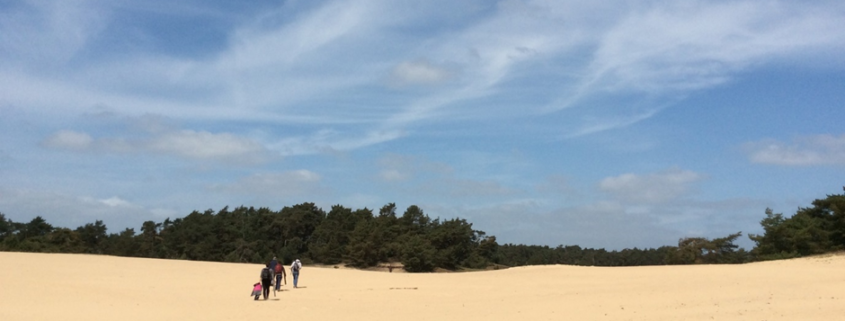Global Geoarchaeology: theory and practice CANCELLED
Global Geoarchaeology: theory and practice CANCELLED
Credits: 2 ECTS
Teachers: Dr. Ian A. Simpson (i.a.simpson@btinternet.com) and Dr. Sjoerd J. Kluiving (s.j.kluiving@vu.nl)
Geoarchaeology as a research field continues to grow as analyses and techniques more typically used in earth and environmental sciences are shown to have use in interpreting the archaeological record (Diskin et al, 2013). Geoarchaeology is ‘the science that studies geo-bio-archives in an archaeological context by also considering historical and archaeological data sources in its syntheses’; it emphasizes a multidisciplinary role, as a sub discipline of geomorphology, between the geosciences and cultural sciences (Engel & Brückner, 2014). Geoarchaeology provides insights into landscape reconstructions, human behaviours, and cultural processes that are a backdrop to landscape change (Kluiving et al, 2015). In this course a toolbox is presented to study geoarchaeological research problems and which methods are used from Northwest European and North Atlantic case study areas.
Objectives:
This course gives theoretical and practical frameworks for interpreting soils, sediments and landscapes as records of the past and provides theoretical training in field and laboratory methods that identify, quantify and evaluate early human activities and environmental imprints. These understandings and skills contribute new landscape histories for Northwest European and North Atlantic regions, while these techniques can also be applied elsewhere. This work offers important and challenging perspectives on how interpretations of soils and sediments contribute to how people lived with and adapted to environmental change and has resonance with contemporary debates on sustainability, resilience and heritage management.
Learning outcomes:
- Understanding the principles of interpreting landscapes and sediment stratigraphies as records of the past.
- Understanding the contributions of landscape studies and sediment analyses in the interpretation of key aspects of landscape history including multi-scale and multi-topical cartographic analysis, sediment description (from outcrop, core and lacquer peel), coring practice, as well as micro-morphological observations.
- Ability to integrate landscape histories and sedimentary evidence with inter-disciplinary sources, including documentary, archaeological and environmental information, to address broader issues of society – environment change interactions.
- The module provides a foundation for research-based field and laboratory Dissertation topics in Geoarchaeology and landscape history.
Acquired skills:
- Competence in the application of science based methods to answer archaeological research questions.
- Competence in the description, analyses and interpretation of soils and sediments from archaeological landscape contexts.
- Competence in cross-disciplinary approaches applied to questions of society-environment interactions.
Seminar Programme:
Developing a toolbox for geoarchaeology in archaeological field projects
The 3-day course is entirely research led and focused on two live, current, research projects. Files with seminar materials as well as the reading will be available beforehand.
- NW European area: Establishing the landscape history of a focusing on the problem of determining age of humic podzols, micro-podzols and plaggic soils, opposed to drift sands from Neolithic / Bronze Age, through Iron Age to the medieval period
- North Atlantic. Establishing transitions in land management from Neolithic / Bronze Age, through Iron Age to the medieval period as expressed in the formation of North Atlantic anthrosols.
Wednesday 31 May, 9.00-17.00, room HG-07A36
9.00-9.15 hours: Opening; welcome, instructions iPad4G, blogposts
Research problems, maps, stratigraphies and lacquer peels NW European and North Atlantic areas
9.15- 11.00 session 1: Topographic, geomorphological and soil maps of central –Netherlands showing Holocene and Pleistocene sediments and soils. Lacquer peels of higher sandy soils as well as lower clayey soils.
11.00 – 12.30 session 2: Mapping exercise NW Europe and discussion
12.30-13.30 Lunch break
13.30- 15.00 session 3: Lacquer peel description exercise and discussion NW Europe
15.00 – 17.00 session 4: Stratigraphy exercise and discussion North-Atlantic
Thursday 1 June 9.00-17.00, start from inner parking place VU campus terrain
Fieldwork in NW European area: Wekeromse Zand (Pleistocene) and Amstelveen (Holocene)
9.00-10.30 travel time Amsterdam-Wekeromse Zand, preparing for fieldwork
10.30- 13.30 session 5: Coring, observing, soil profile description on recording sheets
14.00-15.30 travel time Wekeromse Zand-Amstelveen
15.30-17.00 Session 6: Coring, observing, soil profile description on recording sheets
Geological and stratigraphical description of Holocene sedimentary sequence in the Western Netherlands (Amstelveen).
17.00-17.15 Return to Vrije Universiteit Amsterdam
Friday 2 June 9.00-12.00 room HG-14A3
Micromorphology North-Atlantic; student presentations and synthesis
9.00 Hand-in of profile description assignment.
9.00-12.00 session 7. Semi-quantitative assessment on recording sheets and construction of a micro morphological assessment.
12.00-13.00 Lunch break; deadline for blogpost 13.00 hours!
13.00-16.30 session 8: Student presentations
16.30-17.00 session 9: Synthesis of toolbox methods
Assessment:
Presentation: oral (20%), blogpost (20%), Research report (3000 words, excl. figures, images, photos and references) (60%). The research report is due Friday 9 June 2023. The minimum grade to obtain a pass for a module is a 60% score.
Please see this this document for readings and tools.
Any questions relating to the content of the course can be sent to Sjoerd Kluiving, s.j.kluiving@vu.nl.
Registration: This course is cancelled.


